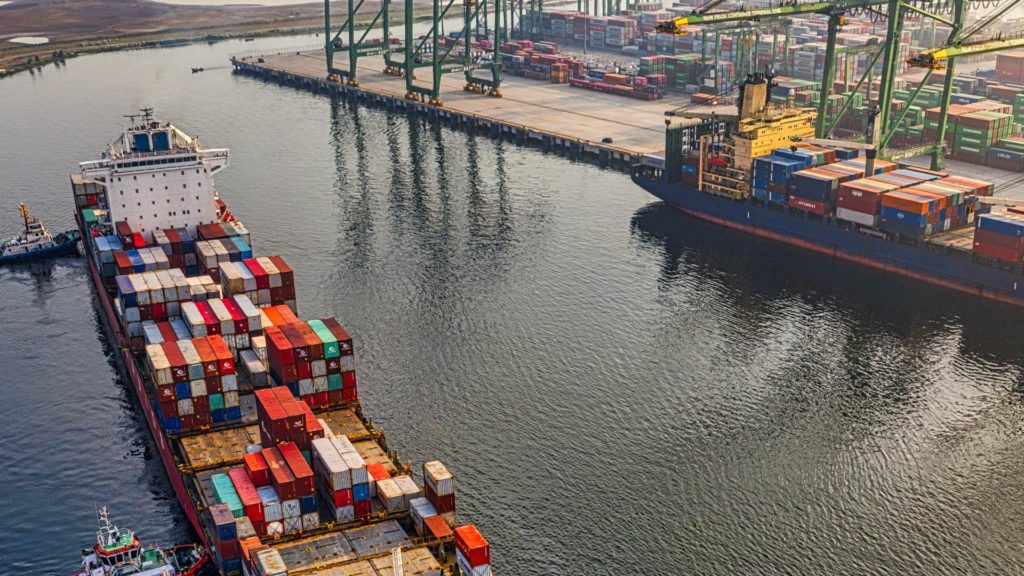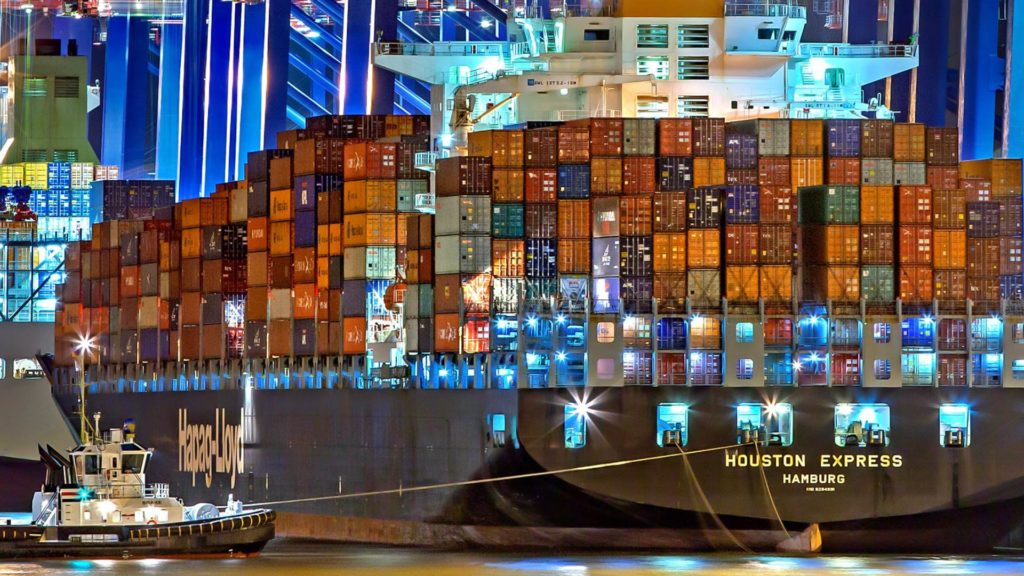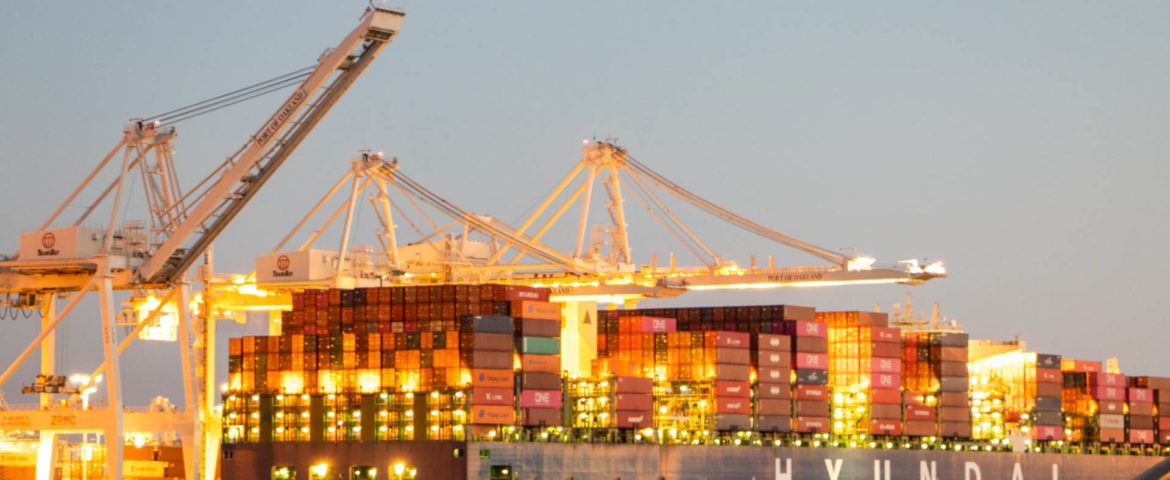Ocean Shipping Alliances Explained
Billions of tons of freight move internationally 24/7 on over five thousand container ships, providing service to hundreds of ports across the globe.
This is the true backbone of global trade, without ocean shipping, global freight would rely on air cargo services, which is vastly more expensive and handles a much smaller percentage of trade, plus many large and heavy items simply aren’t realistically moved via air.
While there are hundreds of ocean freight companies that provide ocean shipping services, the majority of all international ocean freight moves via the top 10 largest ocean carriers. With the largest being Maersk, MSC, CMA CGM, COSCO, Hapag-Lloyd, ONE, and Evergreen. Just these 7 carriers move 78% of global container freight. Like any freight market, ocean shipping is heavily supply and demand-based. Traditionally the ocean shipping industry is a high volume, low margin business that requires massive capital investments to build and maintain the ships and their facilities.
The economic model of these firms means that it is strongly preferable that ships should be filled to capacity, or profit is lost. In an effort to maximize the cost models and provide service on as many routes as possible, throughout the decades “alliances” have existed, which in essence is the practice of ocean shipping firms sharing fleets of ships. So instead of both MSC and Maersk operating a separate vessel on a certain rotation, they share a single vessel, which maximizes ROI on capital costs. And arguably reduces the cost of ocean freight to shippers.
In recent years, alliances have become further consolidated and solidified, with three current major alliances operating a near-monopoly on global ocean shipping. Prior to the covid-19 pandemic, import volumes into the US dropped somewhat and major pressures were on ocean carriers to reduce costs and boost their profitability. The current 3 major alliances were solidified in 2017, reportedly these 3 alliances move 80% of global trade.
Vessel Sharing
One of the most core elements to alliances is that vessels are shared between member firms to provide coverage across their service network. This allows a better and more efficient deployment of ships globally, and hopefully, provides better and less costly service for customers, and the needed margin for ocean shipping firms to spend hundreds of millions on new more efficient ships.

Other Cost Reductions
Ocean Alliance operations reduce operating costs for firms, not only by pooling ships and sharing lanes, but also by support services and how they operate and develop agreements with port authorities. By pooling port resources, it further reduces costs, as physical infrastructure and terminal costs can be shared across partnered lines. A plus of this arrangement is that it facilitates more regular service on lanes that otherwise might not have the necessary volume for major lines to offer weekly service.
Downsides of Ocean shipping Alliances
Like any business niche, extreme consolidation in an industry can lead to pricing problems, and service issues due to a lack of competition. The volume held by the top 3 ocean shipping alliances is such an extreme percentage of global shipping volume, that questions and accusations have certainly been made against member firms. Particularly in regards to price competition or lack thereof between the three major ocean shipping firms.
Future of Ocean Shipping
It’s hard to say if further industry consolidation will occur, one perspective probably points to this, as more volume consolidation and larger and larger ships mean more profit through reduced costs, however, another perspective is that due to supply chain weaknesses uncovered during the pandemic, more supply chain resiliency is needed. This crops up in a variety of ways, but one potential means to diversify global shipping is for ocean volume to be spread amongst more ports. For example, Los Angeles/Long Beach handle the majority of US trade from China, but increasingly the ports of Charleson, SC, and Savannah, GA have seen increases in transpacific freight in an effort to bypass the congestion in southern California. It’s possible that volumes will rise in an attempt to avert future port congestion. This could mean that smaller ports like Miami, Wilmington NC, Mobile, New Orleans, etc see volume increases.
A major challenge of smaller ports attracting more vessel rotations and thus more volume is their physical infrastructure. Many ports do have channels deep enough, turning basins large enough, nor cranes high enough to unload the massive 20,000+ TEU ships. None of these assets are cheap to build and take years to finish. This is a major reason why so many ports have massive capital programs for renewed infrastructure, as they know projects will take 5-10 years to complete. Inland transportation out of Long Beach/LA and Savannah have also been optimized over the years to feature highly efficient rail access on docks. Thus allowing the direct transfer of freight from ship to train, meaning that cargo moves in a very energy-efficient manner and road congestion is avoided around the ports. This also allows drayage carriers to allocate their capacity to other freight, maintaining container throughput.

Energy Efficiency
International fuel and emissions regulations have contributed to rising costs for ocean carriers in an effort to reduce carbon emissions from the massive cargo ships. Over time, future ships will be increasingly energy-efficient, some perhaps transitioning to LNG or LPG fuel sources to promote even further reduced carbon emissions.
While many refer to ocean shipping firms as “steamship lines”, the mainstay of their fleets has not been steam-powered via boiler and turbine or reciprocating steam engines in decades. Steam power in ships, other than nuclear powered vessels, is mostly a thing of the past with modern diesel engines now providing the horsepower needed.
Inland Ports and Intermodal Shipping
Inland ports provide an extended reach of port facilities and allow expedited and more efficient movement of international container freight from seaports to inland locations without having to utilize roadways and over the road trucking for the entire inland portion of the trip. Often inland ports also have provisions for customs to be filed inside the inland port, further expediting the movement of the containers from the actual seaport. Inland ports have numerous benefits that have spurred significant investment in them over the past several decades, including a dramatic reduction in carbon emissions as railroads are moving the containers from the seaport to the inland port, which is much more efficient than over the road freight. In addition, it can help to reduce congestion and improve road safety since even one container train would require several hundred trucks to move all the containers via the interstate. A great example is the inland port north of Atlanta which helps to keep the freight off the already very busy Atlanta interstate system. Expect to see more inland ports developed in the coming years in an effort to foster increased efficiency within supply chains.
Want a free lane and cost savings analysis? – Get in Touch!
Zmodal is a top intermodal shipping company providing door-to-door intermodal, and full truckload services nationwide throughout our digital supply chain dashboard which provides easy route searching, booking, document management, and analytics. CONTACT US if you want to lower your supply chain costs or want access to North American intermodal capacity.



